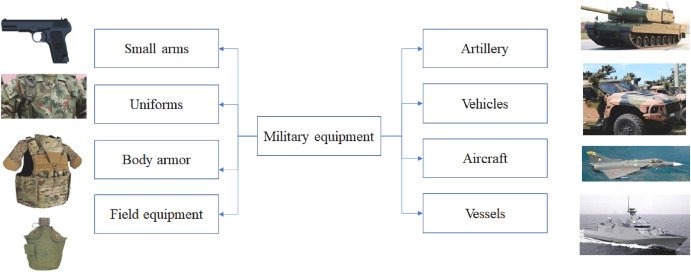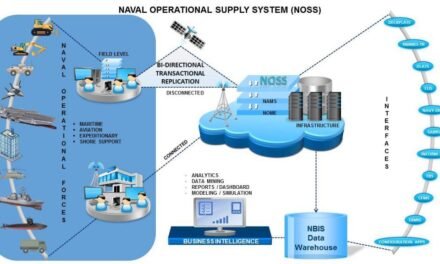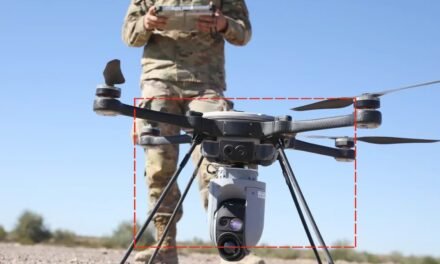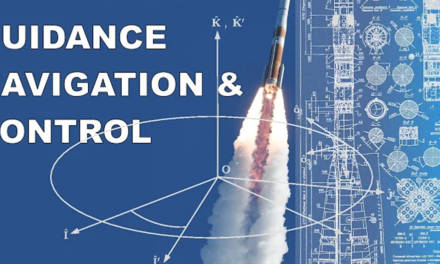Modern militaries rely on a wide range of defense equipment, categorized by their functions and operational domains. These categories reflect the diversity of military operations, from ground combat to space-based activities, and are essential for maintaining a strategic edge. Here are the primary categories of defense equipment used by modern militaries:
1. Land-Based Equipment
- Armored Fighting Vehicles (AFVs):
- Tanks, infantry fighting vehicles (IFVs), and armored personnel carriers (APCs) provide mobility, protection, and firepower for ground forces.
- Examples: M1 Abrams (Tank), BMP-3 (IFV).
- Artillery Systems:
- Includes self-propelled artillery, howitzers, rocket launchers, and mortars for long-range fire support.
- Examples: M777 Howitzer, HIMARS (High Mobility Artillery Rocket System).
- Tactical and Utility Vehicles:
- Light and medium vehicles for troop transport, logistics, and reconnaissance.
- Examples: Humvees, JLTVs (Joint Light Tactical Vehicles).
- Small Arms and Infantry Equipment:
- Firearms such as rifles, machine guns, and pistols, along with personal protective equipment (PPE) like helmets and body armor.
- Examples: M4 Carbine, FN MAG (Machine Gun).
- Anti-Tank and Anti-Air Systems:
- Man-portable and vehicle-mounted weapons for targeting enemy armor and aircraft.
- Examples: Javelin (anti-tank missile), Stinger (man-portable air-defense system).
2. Air-Based Equipment
- Fighter Aircraft:
- Used for air superiority, ground attack, and multi-role missions.
- Examples: F-35 Lightning II, Su-57 Felon.
- Bombers:
- Long-range aircraft for strategic bombing missions.
- Examples: B-2 Spirit, Tu-160 Blackjack.
- Transport and Utility Aircraft:
- Aircraft for logistics, troop transport, and medical evacuation.
- Examples: C-130 Hercules, C-17 Globemaster III.
- Helicopters:
- Used for attack, reconnaissance, troop transport, and medical evacuation.
- Examples: AH-64 Apache (Attack), UH-60 Black Hawk (Utility).
- Unmanned Aerial Vehicles (UAVs):
- Drones for surveillance, reconnaissance, and strike missions.
- Examples: MQ-9 Reaper, Bayraktar TB2.
- Airborne Early Warning and Control (AEW&C) Aircraft:
- Provide radar coverage and command capabilities for air and ground operations.
- Examples: E-3 Sentry, KJ-2000.
3. Naval Equipment
- Aircraft Carriers:
- Platforms for launching and recovering aircraft, serving as floating airbases.
- Examples: USS Gerald R. Ford, INS Vikramaditya.
- Destroyers and Frigates:
- Multi-role warships for anti-air, anti-submarine, and surface combat.
- Examples: Arleigh Burke-class destroyer, FREMM-class frigate.
- Submarines:
- Used for stealth operations, including attack and strategic deterrence.
- Examples: Virginia-class (Attack), Vanguard-class (Ballistic Missile).
- Amphibious Assault Ships:
- Enable landing operations and troop deployment.
- Examples: USS America, Mistral-class.
- Patrol and Littoral Combat Ships:
- Operate in coastal and shallow waters for reconnaissance and security.
- Examples: Littoral Combat Ship (LCS), OPV (Offshore Patrol Vessel).
- Naval Aviation:
- Aircraft deployed from ships for reconnaissance, anti-submarine, and strike missions.
- Examples: Seahawk Helicopters, F-35B (Carrier-based Fighter).
4. Space-Based Equipment
- Military Satellites:
- Used for communication, reconnaissance, navigation, and missile detection.
- Examples: GPS satellites, SBIRS (Space-Based Infrared System).
- Anti-Satellite (ASAT) Weapons:
- Systems designed to disable or destroy enemy satellites.
- Examples: Kinetic kill vehicles, co-orbital ASAT systems.
- Spacecraft for Surveillance and Defense:
- Space vehicles conducting reconnaissance, electronic warfare, or other operations.
- Examples: X-37B Orbital Test Vehicle.
5. Cyber and Electronic Warfare Systems
- Electronic Warfare (EW) Equipment:
- Disrupts enemy communications, radar, and electronic systems.
- Examples: Jammers, spoofing devices, and SIGINT platforms.
- Cybersecurity Tools:
- Protect military networks from cyberattacks and enable offensive cyber operations.
- Examples: AI-driven network defense systems, intrusion detection tools.
- Signals Intelligence (SIGINT):
- Intercept and analyze enemy communications and radar signals.
- Examples: ELINT aircraft and ground stations.
6. Missile and Rocket Systems
- Surface-to-Air Missiles (SAMs):
- Defend against aircraft, UAVs, and cruise missiles.
- Examples: S-400, Patriot system.
- Ballistic Missiles:
- Long-range missiles for strategic and tactical operations.
- Examples: Trident II (SLBM), DF-21D (Anti-Ship Ballistic Missile).
- Cruise Missiles:
- Precision-guided missiles for ground and naval targets.
- Examples: Tomahawk, BrahMos.
- Hypersonic Weapons:
- High-speed missiles with maneuverability to evade defenses.
- Examples: Kinzhal, DF-17.
- Rocket Artillery:
- Long-range systems for area saturation and precision strikes.
- Examples: MLRS (Multiple Launch Rocket System).
7. Surveillance and Reconnaissance Systems
- ISR Platforms:
- Intelligence, surveillance, and reconnaissance equipment for real-time battlefield awareness.
- Examples: Global Hawk UAVs, AWACS.
- Ground Sensors:
- Deployed for perimeter security and monitoring enemy movements.
- Examples: Seismic and acoustic sensors.
8. Special Operations Equipment
- Specialized Weapons and Gear:
- Equipment tailored for covert operations and extreme environments.
- Examples: Suppressed weapons, night vision goggles.
- Underwater Systems:
- Tools for divers and underwater combat, including SDVs (Swimmer Delivery Vehicles).
- Examples: SEAL Delivery Vehicles.
9. Defense Technology and Experimental Systems
- Directed-Energy Weapons (DEWs):
- High-energy lasers and microwaves for missile defense and anti-drone operations.
- Examples: LaWS, PHASER.
- Autonomous Systems:
- AI-driven systems for logistics, reconnaissance, and combat.
- Examples: Loyal Wingman drones, autonomous UGVs.
- Hypersonic Vehicles:
- High-speed vehicles for reconnaissance and strike missions.
- Examples: DARPA’s Hypersonic Glide Vehicle.
10. Support and Logistics Equipment
- Engineering Vehicles:
- For construction, mine clearance, and battlefield support.
- Examples: Armored bulldozers, bridge-laying vehicles.
- Medical Evacuation (MEDEVAC):
- Systems for evacuating and treating wounded personnel.
- Examples: Medical helicopters, field hospitals.
- Fuel and Supply Vehicles:
- Logistics systems to maintain operational readiness.
- Examples: Tanker trucks, supply drones.
Conclusion
Modern militaries rely on a diverse array of defense equipment to address threats across land, air, sea, space, and cyberspace. Continuous advancements in technology, such as AI, hypersonics, and DEWs, are reshaping these categories, ensuring that militaries remain capable of addressing both current and emerging challenges effectively.
Hashtags
#MilitaryEquipment #DefenseTech #ModernDefenseSystems #AdvancedMilitaryTech #GlobalDefense #LandSystems #ArmoredVehicles #TanksAndArtillery #InfantryEquipment #GroundCombatTech #NavalSystems #NavalWarfareTech #WarshipsAndSubmarines #AirSystems #AirForceTech #CombatAircraft













